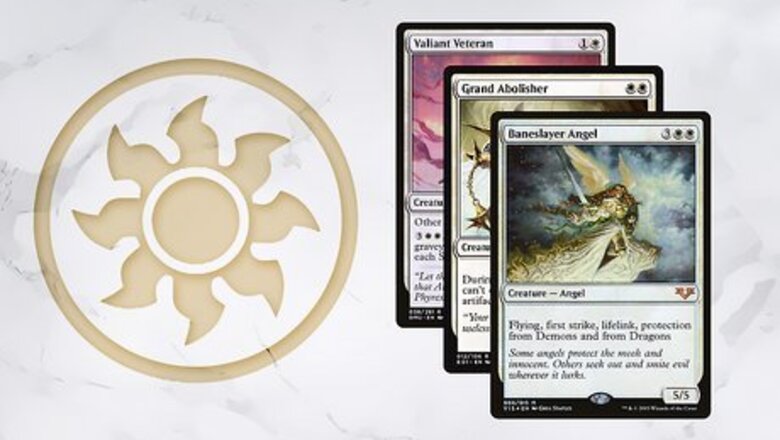
views
The 5 Colors
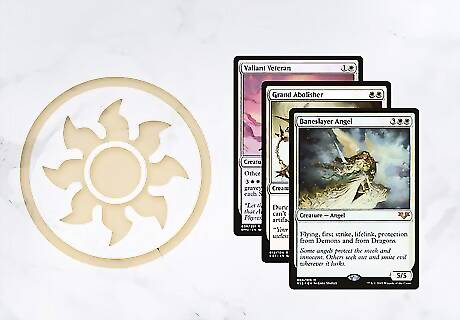
White (W) In Magic, white is the color of order, justice, and law. White likes civilization and believes society is generally good for everybody—so long as you can follow its rules. White is associated with tribes like angels, humans, and soldiers. Enemy colors: Red and black. Ally colors: Green and blue. Key mechanics: Flying, first strike, life gain, and vigilance. White usually cares about building an army of smaller creatures to gain incremental advantage or win fast. Core deck archetypes: Aggro, Enchantress, tokens matter, Soul Sisters, and Prison.
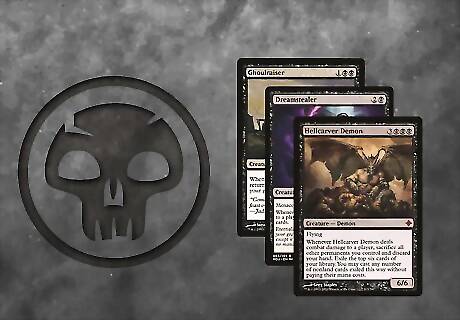
Black (B) Black is the color of greed, power, and ambition. It’s associated with necromancy, politics, and taking risks. As the black staple card Dark Confidant puts it, “Greatness, at any cost.” Black is associated with zombies, demons, humans, rats, and vampires. Enemy colors: Green and white. Ally colors: Red and blue. Key mechanics: Life gain, menace, life loss, sacrifice, deathtouch, and hand destruction. Black typically leverages resources to gain control over their opponent. Core deck archetypes: Reanimator, control, 8 Rack, and combo (with cards like Tendrils of Agony, Dark Ritual, and Doomsday).
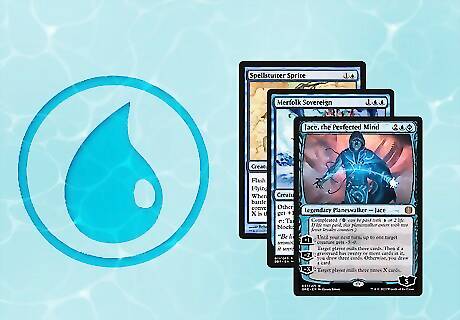
Blue (U) Since black already gets B for the shorthand, everyone uses U for blue. Blue is the color of knowledge, academia, magic, and creation. Blue is also known for trickery, illusions, and brain over brawn. Tribes associated with blue include wizards, merfolk, faeries, and birds. The most popular character in all of Magic, Jace, is a blue mage. Enemy colors: Red and green. Ally colors: White and black. Key mechanics: Flying, counter magic, card draw, and unblockable. Blue wants to mess with whatever the opponent is doing, or “cheat” its way into a win. Core deck archetypes: Control. So much control. If you enjoy stalling the game and saying “No” to your opponent when they cast a card, you need blue in your deck.
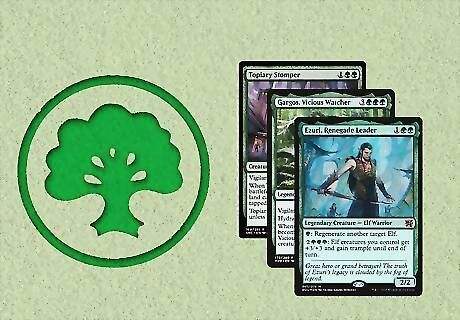
Green (G) Green is the color of growth, rebirth, unity, acceptance, and unity. It wants nothing to do with the modern world and draws its magic from the natural world. Green is associated with wild plants and animals, and its main tribes include elves, beasts, treefolk, more elves, hydras, plants, and elves. There are a lot of elves in Magic. Enemy colors: Blue and black. Ally colors: White and red. Key mechanics: Trample, mana generation, ramp, Enchantress, land destruction, flying creature destruction, reach, and fight. Green decks like to outpower their opponents with raw resources and simple synergies. Core deck archetypes: Big creature ramp, elves combo and aggro, Ponza, stompy, and midrange.

Red (R) Red is the color of passion, impulsivity, discovery, anger, and freedom. Red associates with fire, stone, earth, metal, and love. It doesn’t want to sit around studying or building—it wants to act, now. Red is considered the most aggressive color in Magic and its core tribes are elementals, goblins, dragons, warriors, and humans. Enemy colors: Blue and white. Ally colors: Green and black. Key mechanics: Haste, discard-draw (“looting”), burn, firebreathing (giving +1/+0), land destruction, and first strike. Red decks tend to be fast, but struggle with the long game. Core deck archetypes: Goblins, burn, Big Red, Skred, and prison.
The Ravnican Guild Color Pairs

Azorious: Blue and White (UW) The Azorious Senate is the government and lawmakers on Ravnica. UW decks are usually associated with control and card draw. These colors typically want games to go as long as possible to build resources and set up win conditions. Key mechanics: Flying, defender, countermagic, card restriction, and tapping. Core deck archetypes: Control. Azorius decks tend to be exclusively reactive and defensive, using cards like Teferi, Time Raveler and Supreme Verdict to prevent their opponent from building any momentum.

Boros: Red and White (RW) The Boros Legion are the law enforcers on Ravnica. Boros decks tend to be highly aggressive, with the occasional control elements. If you like playing “pure” Magic without any heavy combo elements, you’ll probably enjoy playing red-white decks. Key mechanics: First strike, double strike, direct damage, haste, and enchantments. Core deck archetypes: Prison, Big Red, aggro, tokens, and counters. There are a lot of ways to build a red-white deck, so if you like playing fair Magic, Boros is probably for you. In Magic, “fair” refers to decks that don’t cheat, bend, or break the original rules of Magic.
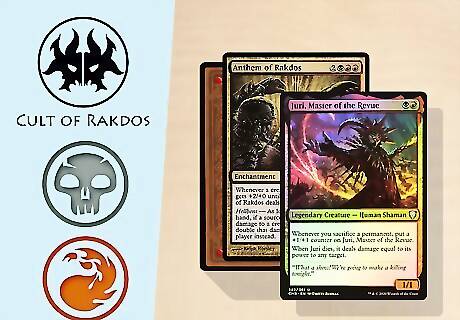
Rakdos: Black and Red (BR) The Cult of Rakdos are the entertainers and sometime-assassins on Ravnica. BR decks emphasize black’s greediness and red’s passion, so these decks tend to be very fast, aggressive, and prone to “cheating” opponents out of their cards. Key mechanics: Hand discarding, direct damage, haste, and graveyard shenanigans. Core deck archetypes: Scam, reanimator, aristocrats, vampires, and aggro.
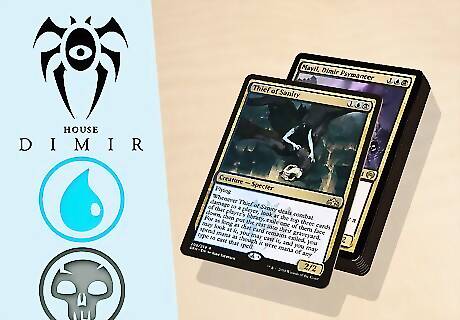
Dimir: Blue and Black (UB) House Dimir are the traders of secrets and intel on Ravnica. UB is about greed, secrecy, cheating, and proactive control. Unlike UW control, UB control tends to be more aggressive and energetic. If you enjoy outmaneuvering your opponents, you’re likely going to enjoy UB decks. Key mechanics: Mill, secret knowledge, card theft (like Thief of Sanity), and graveyard matters. Core deck archetypes: Reanimator, control, and mill.

Golgari: Green and Black (BG) The Golgari Swarm are the garbagemen of Ravnica. Living in the depths of the sewers, BG decks tend to emphasize rebirth, recursion, and growth through death. GB decks tend to skirt the line between fair and unfair strategies, so these colors tend to be very midrange. Key mechanics: Anything graveyard related. Self-mill, reanimator, sacrifice, and undeath. Core deck archetypes: Sacrifice, graveyard matters, Yawgmoth, elves, zombies, and midrange.

Gruul: Red and Green (GR) The Gruul Clans are the outcasts of Ravnica—they basically hang out, drink too much, and occasionally raid other guilds. GR decks focus on the randomness of nature and the impulsivity of the spirit. Elementals tend to be uniquely Gruul. If you enjoy playing powerful creatures and spells but don’t want to pay too much attention to your opponent, GR is a great combo for you. Key mechanics: Haste, wither, bloodrush, land destruction, sacrifice, and riot. Core deck archetypes: Ponza, aggro, turn-one combo, and stompy.
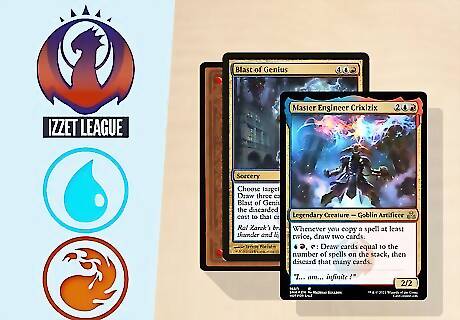
Izzet: Blue and Red (UR) The Izzet League are the academics, experimenters, and alchemists of Ravnica. Mechanically, UR is the tempo color set. In Magic, tempo refers to your momentum and position on board. A good tempo deck will remove their opponents’ creatures and protect their own. If you like making a lot of decisions each game to get ahead, Izzet is for you. Key mechanics: Counter magic, burn, small creatures matter, enchantments, spells matter, and control. Core deck archetypes: UR tempo, Delver (named after Delver of Secrets), and Murktide.

Orzhov: Black and White (BW) The Orzhov Syndicate are the mafia and church of Ravnica (yeah, you read that right!). BW is a kind of “Jack of all trades” color combo. It can be built to be hyper-aggressive, or designed more like a control deck. BW is best at unconditional creature removal (see, Path to Exile, Doom Blade, Fatal Push, and Sword to Plowshares), so there’s a ton of freedom in how you construct a BW deck. This is also why players tend to say Black and White are better “support” colors, with Green, Red, and Blue being better main colors. Key mechanics: Creature removal, hand destruction, life gain, flicker, and life loss. Core deck archetypes: Aristocrats, zombies, Soul Sisters, vampires, and Dead Guy Ale.

Selesnya: Green and White (GW) The Selesnya Conclave maintain peace on Ravnica and engage in volunteering efforts. Green and White are the two colors most focused on creatures, so GW decks tend to rely on big, beefy creatures or lots of smaller creatures to overwhelm their opponents. Key mechanics: +1/+1 counters, ramp, artifact/enchantment removal, trample, flying, and fight. Core deck archetypes: Enchantress, go wide tokens, and midrange.

Simic: Green and Blue (UG) The Simic Combine are the mad scientists of Ravnica, and help run the universities of the plane alongside the Izzet. UG is perhaps the least popular color combo because it struggles to remove creatures. However, UG is also potentially the most innovative and combo-driven set of colors in the game. UG decks tend to be very tricky and evasive. Key mechanics: Flash, enter-the-battlefield effects, +1/+1 counters, evolve, countermagic, and tempo. Core deck archetypes: Turbofog, Merfolk, Neoform, and Infect.
The Shards and Wedges

Bant: Blue, White, & Green (BWG) Bant is defined by its absence of black or red—the colors of greed and passion. Bant decks tend to be focused heavily on creatures, building a board, and playing at an instant speed. Picture blue’s desire to improve, green’s sense of evolution, and white’s interest in order. Key mechanics: Exalted, flying, +1/+1 counters, flicker, creature trading (like Eldritch Evolution) and enchantments. Popular decks: Bant Company, Humans, Aluren, and Neoform.

Esper: Black, White, & Blue (WUB) Esper is strongly associated with artifacts. Missing green and red, the two colors associated with nature, Esper is arguably the least interested in the natural world. Esper is a popular color combination for control and combo decks. Key mechanics: Artifacts matter, counter magic, and equipment. Popular decks: Zur the Enchanter combo/aggro, Sword Combo, and Affinity.
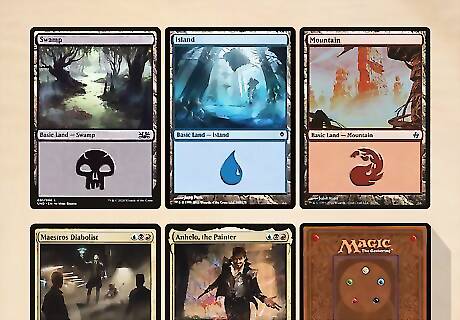
Grixis: Black, Blue, & Red (RUB) Grixis is a popular color wedge that’s most iconically associated with tempo control decks that leverage cards like Snapcaster Mage and Delver of Secrets to win. Grixis is perhaps the most intensely and intelligent iteration of black, so it’s greed incarnate with all of red’s passion and blue’s knowledge. Key mechanics: Hand destruction, card draw, counter magic, and graveyard recursion. Popular decks: Grixis Delver, Grixis Tempo, reanimator, Living End, and Grixis Control.

Jund: Green, Red, & Black (GRB) Jund is reflective of the food chain—it’s the struggle of the natural world at its finest. Jund is a popular wedge largely associated with one archetype: midrange. When a player says they’re playing “Jund,” you know exactly what they mean: hand disruption, strong creatures, and removal. Key mechanics: Devour, haste, graveyard shenanigans, and anything midrange. Popular decks: Modern Jund and Legacy Jund (notably, these are basically the same deck in spirit).

Naya: White, Red, & Green (GRW) Naya’s colors are the most “natural” in the sense that white, red, and green can all be found in the tension between the order and chaos of nature. As a result, Naya decks usually care about creatures or lands, and they don’t tend to be big on sorceries and en Key mechanics: Counters, power 5 or greater matters, Haste, and “growing creatures.” Popular decks: Zoo, Naya Landfall, enchantments matter, prison.
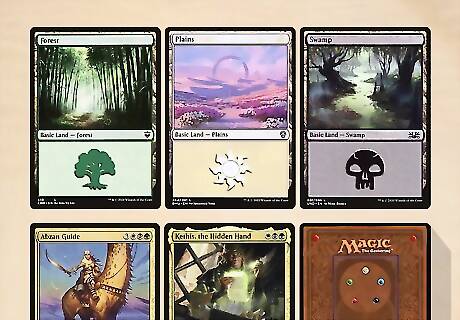
Abzan: Green, White, & Black (GWB) The first of our Khans wedges, Abzan is very similar to Jund. It’s really only known for midrange decks: powerful creatures, hand discard, and creature removal. A note on names: Since Khans was such a new set in Magic’s history and there had never been any names for these color sets, you may run into each wedge’s old name from time to time. Old name: Junk. Some people called it Necra, but Junk was easily the most popular moniker. The name comes from the idea that Abzan decks would put “any old junk” in their list. Key mechanics: Outlast, trample, and graveyard shenanigans. Popular decks: Abzan midrange. There’s a very popular deck in Pioneer known as Greasefang, too.
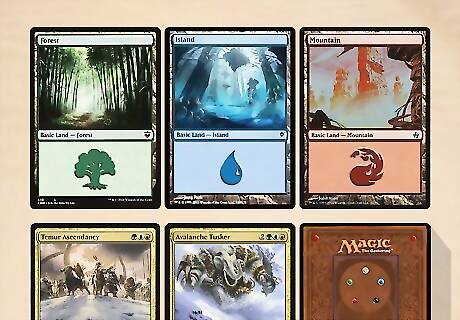
Temur: Green, Blue, & Red (RUG) Temur is missing black and white—the two colors most interested in order. As a result, Temur decks tend to be very explosive, wild, and hard to predict. Old name: Rug. Some people used Ceta. Key mechanics: Ferocious, power 4 or greater matters, trample, and fight. Popular decks: Footfalls (aka Rhinos), Creativity, Temur Delver, cascade decks, and Sneak and Show.
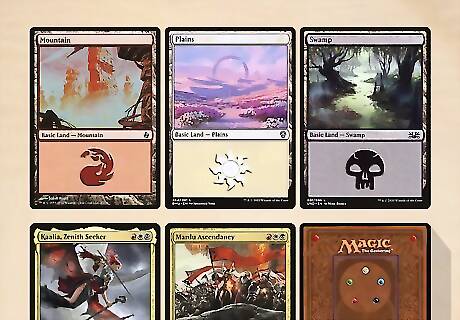
Mardu: Red, White, & Black (RWB) Mardu is perhaps the least popular color combination in Magic because it can be difficult to win without green’s big creatures or blue’s permission magic. Still, Mardu decks are known for packing powerful removal, since red, white, and black have the best answers to creatures in the game. Old names: Newspaper or Dega. Key mechanics: Looting, raid, haste, hand disruption, treasure, and hand manipulation. Popular decks: Mardu Shadow.
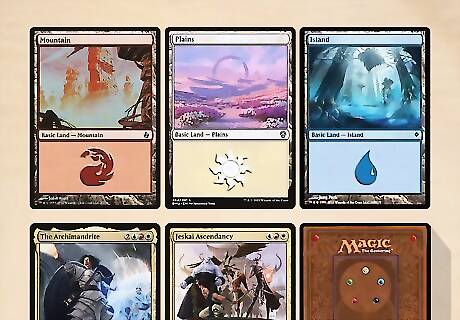
Jeskai: Red, White, & Blue (RUW) Jeskai is the control color combo. These decks either rely entirely on control magic to win the game, or employ fast and evasive creatures to crush their opponents. Old name: American, America, or USA. It was also technically called Raka, but nobody really used that name. Key mechanics: Prowess, flying, permission, tax effects, and haste. Popular decks: Jeskai Prowess, Jeskai Haste, draw-go control, Elementals, and Jeskai Delver.

Sultai: Green, Black, & Blue (BUG) Sultai represents a world without white or red—passion and order. As a result, Sultai is probably the most individualistic and selfish wedge, and these decks reflect that in the 2-for-1 nature of its strongest decks. Old names: Ana or Bug. Key mechanics: Delve, graveyard matters, counters, discard, cost reduction, and recursion effects. Popular decks: Bug Delver, Sultai midrange, BUG’s Life, Blue Jund, and Beanstalk Control.










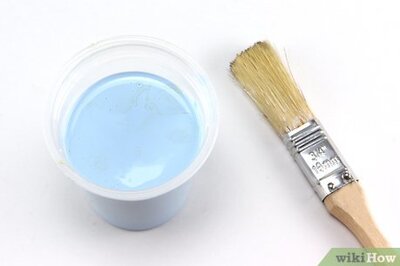



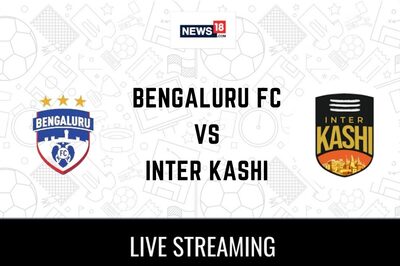
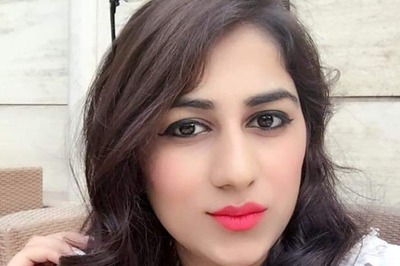

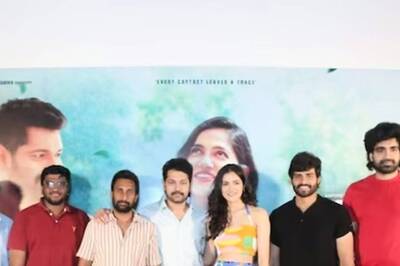


Comments
0 comment